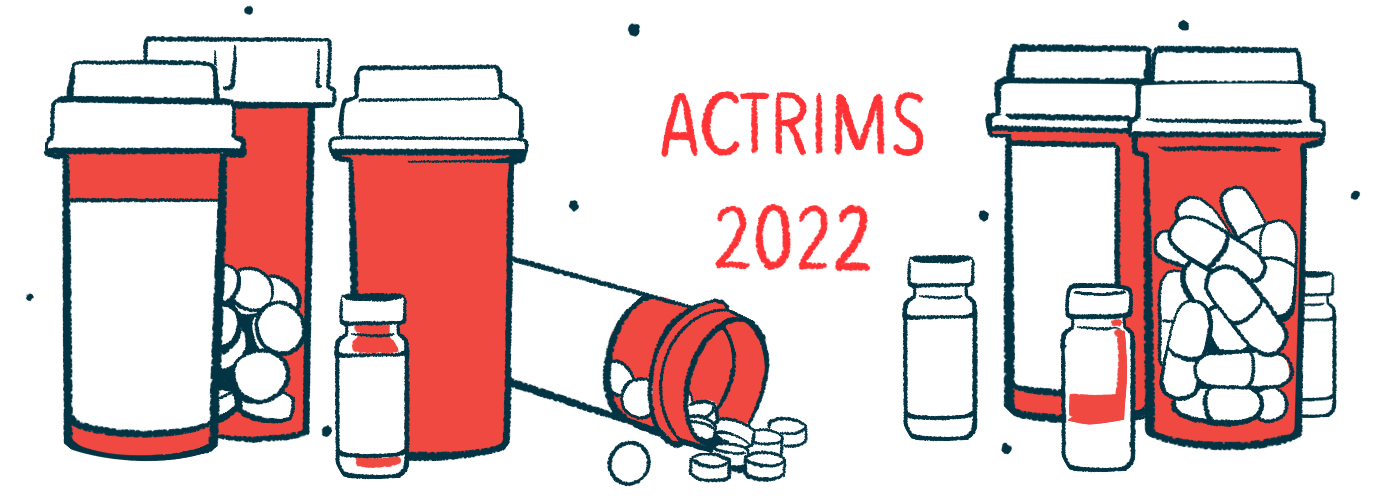#ACTRIMS2022 – Tolebrutinib More Potent Than Other BTK Blockers

Tolebrutinib, an investigative inhibitor of Bruton’s tyrosine kinase (BTK) being developed by Sanofi to treat all forms of multiple sclerosis (MS), shows the potential to be more potent than other BTK inhibitors also in advanced clinical trials, scientists reported.
The findings, based on preclinical data, were shared at the Americas Committee for Treatment and Research in Multiple Sclerosis (ACTRIMS) Forum 2022 in the poster presentation “Comparative CNS Pharmacology of Tolebrutinib Versus Other BTK Inhibitor Candidates for Treating MS.”
BTK is a protein that is integral to the activation of certain immune cells, particularly B-cells. Blocking the activity of this protein may help to lessen inflammation that drives MS.
Tolebrutinib, an oral BTK inhibitor, is currently in Phase 3 clinical testing in patients with relapsing and progressive forms of MS, including those with non-active secondary-progressive MS (SPMS). Two other oral BTK blockers — Roche’s fenebrutinib and EMD Serono’s evobrutinib — also are now being tested in Phase 3 trials in a range of MS patients.
A team led by scientists at Sanofi conducted a series of preclinical tests to measure the relative potency of these three potential treatments.
Scientists first compared their potency by calculating IC50 based on biochemical experiments done in dishes. IC50 is the amount of medication that is needed to block half of the activity of its target; in other words, a lower IC50 means a higher potency because less of the medicine is needed to achieve the same effect.
Results showed that tolebrutinib was about 50 times more potent that evobrutinib, and 9.3 times more potent than fenebrutinib in terms of its ability to inhibit BTK. Further tests of the medicines’ ability to prevent B-cell activation showed consistent results.
Tolebrutinib also inhibited BTK more quickly than the other two medicines: 64 times faster than evobrutinib, and nearly 1,800 times faster than fenebrutinib.
Researchers then examined the pharmacological properties of each medicine through experiments in non-human primates (monkeys) as well as computer simulations. In particular, the scientists focused on levels of medication in cerebrospinal fluid (CSF), the liquid that surrounds the brain and spinal cord, which is collectively called the central nervous system (CNS).
The blood-brain barrier surrounds the CNS and, as its name suggests, regulates which substances are able to cross from the blood into the central nervous system. An ideal BTK inhibitor for MS should be able to bypass this barrier and enter the CNS, as that is where most MS-driving inflammation takes place.
Monkey study results showed that all three medications, given orally at a dose of 10 mg/kg, were present at similar levels in CSF. Based on the prior potency data, the researchers then calculated whether CSF levels of any of the therapies were able to reach IC90, the concentration needed to block 90% of the medicine’s target.
In the first couple of hours after administration, tolebrutinib was detectable in the CSF at levels higher than its IC90, while the other two medications never exceeded their IC90 levels, the researchers reported.
“Based on this preclinical analysis comparing late-stage BTK inhibitors, tolebrutinib demonstrated a superior combination of CSF exposure and potency that exceeded the IC90, a measure of substantial target engagement in the brain,” Tim Turner, PhD, global project head for tolebrutinib at Sanofi who presented the findings at ACTRIMS, said in a press release.
“These data make us optimistic about the potential for tolebrutinib to address the drivers of disability in the CNS, and we look forward to seeing the first Phase 3 readouts next year,” Turner added.







